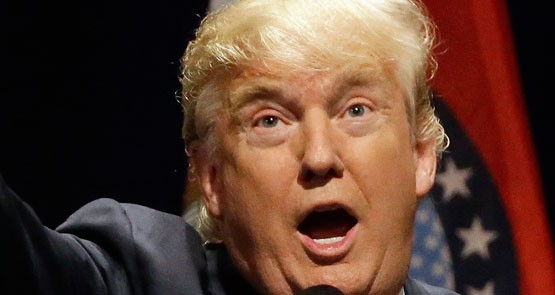
The final multi-state primary, for this part of the race, on Tuesday has delivered no clear winner on either side, ensuring that all candidates will now keep slogging on all the way to June. They were going to anyway, but they now have stronger bragging rights to do so.
Donald Trump and Hillary Clinton both prevailed in Arizona, the largest state on offer, with his Trumpness winning with 47% of the vote, to Cruz’s 25% and John Kasich’s standard-issue 10%. The result was predictable, but Cruz’s score is on the low side.
The state’s right is almost wholly focused on the border control issue, and Cruz’s low vote shows that they just don’t believe him on the matter, even though he’s as hardline as Trump.
In Utah, the results were reversed, utterly. Cruz took 70% of the Mormon state, and Trump got his only third placing to date, coming in at 14%, behind Kasich’s 17%. Trump was always going to do badly here, but there was speculation about whether Cruz could take the 50% threshold, which gives him all 40 delegates.
The day’s yield was thus Trump 58, to Cruz 40 — a mere gain of 18. That single bad showing may be what stops Trump crossing the 1237 threshold before the convention.
Much of Trump’s final falling-short may be due to an ad run by an anti-Trump Super PAC, which featured an old GQ photo shoot, which featured his wife Melania naked on a bear skin rug. Tastefully done, but not tasteful enough for Mormons.
On the Democratic side, Hillary had a surprisingly strong showing against Bernie, 58% to 40% in Arizona. But Bernie won in Utah, 80% to 20% — if you’re a Democrat in Utah, you are going to be a moderate — and in Idaho, 78% to 21%. The result gave Bernie 73 delegates and Hillary 55. Nevertheless, it was portrayed as a loss for Bernie, because the media is in the tank for Hillary.
The Dems have a three-state head-to-head on Saturday — Alaska, Hawaii and Washington state, the latter offering 118 delegates — but apart from Wisconsin in a fortnight, that’s it until April 19, when New York is up, and April 26, when Connecticut, Rhode Island, Delaware, Maryland and Pennsylvania are up.
Pennsylvania and Maryland are winner-takes-all; if John Kasich has a chance at getting a second win, it’s here, but it’s unlikely. The crucial context will be to hold Trump below 50% in New York (district-by-district), a place he not only calls home, but personifies. Different tactics will be required than in Utah. In New York, a cheesecake bearskin shot of Melania would be put out by pro-Trump forces.
The Republican delegate count no stands at near stasis: Trump has 739, Cruz 465, Rubio 166, Kasich 143. The anti-Trump forces thus have 774 delegates to Trump’s 739. There are 550 delegates to get before June 5, when California and a few other states give 300 in one shot.
However, of the dozen-odd competitions before then, almost none offer a chance for Ted Cruz to win, especially with Kasich in the race. Largely winner-take-all or-most, there’s no reason to believe Trump won’t have about 1100 delegates by June 5, and a huge claim on the nomination.
Start getting used to the idea of Donald Trump as the Republican candidate for the presidency of the Unite States. Once in a head-to-head with Clinton, he polls terribly, about 10 points behind (and even worse against Sanders). And if an eye-popping transcript of his group interview with Washington Post editorial staff is any guide, he has no chance of modulating his blowhard, narcissistic style for a campaign proper.
But a lot can happen in a campaign. As Trump himself notes, he might give the Republicans a chance to be competitive in northern rust-belt states, and that would put the Dems in an entirely new fight.
Start getting used to the idea of Donald Trump as something more than just the candidate …








“The result gave Bernie 73 delegates and Hillary 55. Nevertheless, it was portrayed as a loss for Bernie, because the media is in the tank for Hillary.” Slightly reductive; it was considered a ‘loss’ because big wins in states with small delegate counts aren’t going to help Bernie overtake Clinton, who has a significant delegate lead even without superdelegates, and time running out. He needs big wins in big states, like Arizona, Washington State, Wisconsin, NY, etc.
Forget about
itBernie,JakeGuy – it’sChinatownAmerikkka.There’s an amusing Youtube excerpt from Adam Hills’ The Last Leg in which he targets Trump as a golf cheat, citing this as Trump’s ultimate vanity weakness.
He might give them a running in the rust-belt. But with angry Latino voters and the Christian voters sitting on their hands, it’ll put Texas in play. He’s toast.
Zut Alors:
phew!!!…you claim that something amusing happened on that ‘mates laugh-in’ disaster The Last Leg…that’d be a first.
With all the great young comedy talent in Oz, how that pathetic show gets a budget is beyond me.